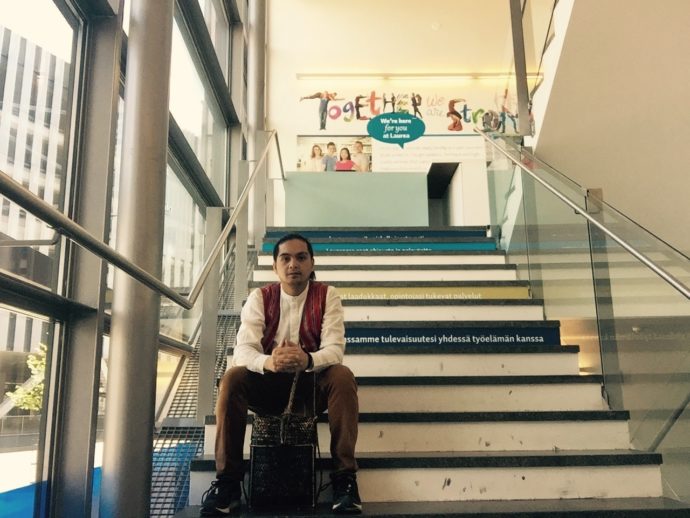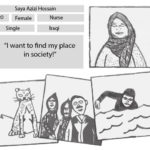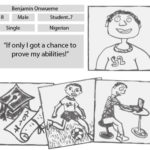Challenges on diversity matter for Laurea and other higher education institutions. These schools should increase academic mobility and students’ heterogeneity. I came to Laurea to study in a pursuit of enhancing my career path in social and health care, with both excitement and agitation. I was excited to encounter different people with diverse cultures and views, yet agitated, because of a fear of not being able to integrate and succeed in a foreign institution.
While studying in Laurea University of Applied Sciences, I have come across numerous fellow students, whose voices may be unheard about their own diversity perceptions and experiences. As a part of a project Enhancing Diversity and Inclusion in Higher Education (IDM) I interviewed some of my peers to share their good experiences and challenges. The aim of the project is to support programme leaders and staff foster inclusive practices e.g. in curriculum development, teaching, learning environments, feedback and assessment practices.
Accepting differences – celebrating diversities
Sara and her wheelchair
“Sara” has a lower limb immobility and uses wheelchair for going to and out of school. She is an epitome of positivity. She finds her difference in a positive light and claims that she feels like everybody else and is able to do her best to succeed in school.
Joni and his Asperger’s syndrome
Having overcome the prime of his age, coming from a foreign country and having been diagnosed with autism spectrum disorder (ASD) also known as Asperger’s syndrome, “Joni” has a voice not well heard of. Despite his condition, he has gained an excellent academic background before studying in Laurea. He is aiming for a change of career by studying in a hope for higher employability. Joni is continuously adapting to his condition and tries to overcome his difference by adjusting himself, rather than anyone else adjusting for him. He finds it hard to integrate to higher education in Finland, because of the language barrier, his battle against his condition and educational system mainly designed for majority, not for people with special needs. He also sees an obvious self-segregation between the foreign and native students. According to his observation, it seems to be easier for a native Finnish student to integrate to a foreign student group, but not the other way around. He also finds difficulties in some courses that include lessons that are taught in the Finnish language and finding some courses that are taught in English.
Alice and her color
“Alice” is a student from foreign background and has lived in Finland for almost eight years. She sees diversity relating to people of different background with different needs. She hopes for a more inclusive approach in higher education. For example, a better usage of the English language and having a more diverse and inclusive Laurea, would be more welcoming and it would invite students from diverse backgrounds.
Lovelyn and her diplomas
“Lovelyn” has two bachelor degrees under her belt and is aiming for the third one. She sees diversity in higher education complex, because it is not only focusing on cultural differences, rather it should also relate to personal differences, like to students’ ability to work best in group work and online courses, while some do not cope with these effectively. She hopes for alternatives in taking the personal and academic differences into account. Her personal needs are for a sustained or even wider scope of courses taught in English and stronger University of Applied Sciences joint programs that would result in a wider selection of courses.
A wider spectrum of diversities
Diversity in higher education involves acknowledgement of the unique needs of the students and recognizing opportunities to enhance their integration and study success. Along the increasing heterogeneity of student population, we should be looking beyond obvious differences, such as gender orientation or nationality and widen the perspective to encompass demographic, cognitive, disciplinary, functional and institutional diversities. In doing so, diversity gaps like personal, cultural and institutional hazards, like discrimination or unconscious biases can be lessened, while providing opportunities to students to reach their full potential in studies. The gaps can be bridged by building diversity awareness and competence and multifaceted cooperation among all educational service stakeholders to foster a more equitable and inclusive learning experiences.
Laurea’s Step for Inclusion and Diversity
Laurea is presented with opportunities to invest more in diversity and inclusion management among programme responsibles, teaching and non-teaching staff. Laurea, among other partner higher institutions under the Enhanced Programme Leadership for Inclusion and Diversity Management in Higher Education, have spearheaded an alliance to develop tools and trainings to improve diversity awareness and competence within higher education institution aimed at fostering students study success.
Keempee – my voice.
 Keempee Labi comes from the north of the Philippines. He is wearing a red upper garment and carries his belongings in a ’sangi’ rattan bag. It is typical for his Igorot tribe members to showcase their cultural identity by wearing traditional garments.
Keempee Labi comes from the north of the Philippines. He is wearing a red upper garment and carries his belongings in a ’sangi’ rattan bag. It is typical for his Igorot tribe members to showcase their cultural identity by wearing traditional garments.
While studying in an international program, my experience of integration in Laurea is very good. I have supportive educators and institutional resources. As a result, I am continuously adapting to a foreign institution. I ‘was’ once different from most students at Laurea. I was of different color, ideology, belief system, and academic background. However, I realized at some point that the term difference has perhaps a negative connotation. It foregrounds solely to distinction on the color of the skin, age, gender, sexual orientation, cultural beliefs system, socio-economic status, physical traits and abilities, religious and political beliefs or ideologies and other distinct traits and circumstances that differentiate and segregate students in higher education. On the other hand, diversity is beyond differences. It is putting into positive light these differences by acknowledging one’s own and everyone else’s uniqueness, while establishing a mutual respect and investing on these diversities to yield better outcomes.
There is maybe a thin line between difference and diversity. But when we accept differences and celebrate uniqueness, then our ‘own’ diversity is beyond our differences. Having that said, I vehemently claim that I do not feel different in Laurea University of Applied Sciences, I am rather diverse and so are you.



Diverse student profiles made by Laurea Master Student Panu Ylivainio
Related article: Student diversity is a big deal